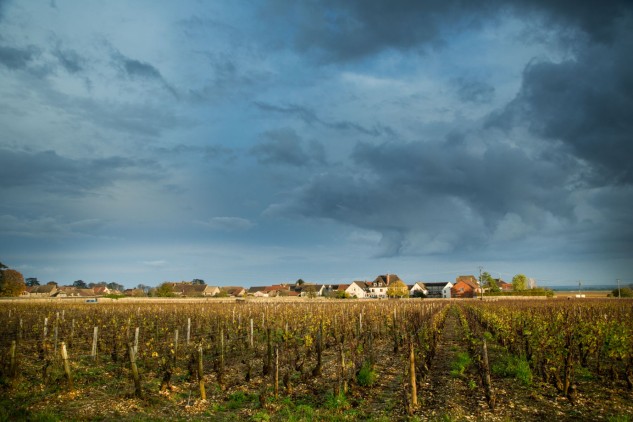
On a cold winter evening six months ago, I welcomed a group of wine merchants and opinion leaders for dinner in Shanghai. There was no specific agenda; it was a casual gathering of friends to swap stories, gossip and drink wine. I asked everyone to bring a bottle, and was astonished to find that among 16 people, not one brought a Bordeaux.
The disenchantment with Bordeaux in China and Hong Kong runs deep. It is now well into its fourth year. But is it here to stay?
Rise and fall
In 2009, China represented a mere eight percent of Bordeaux exports – the region’s fourth-biggest export market by volume and outside the top five by value.
Within two years, China together with Hong Kong had become Bordeaux’s most important market by value and volume, importing about five million cases a year.
By 2012, top châteaux were sending between a third and half of their production to China. Then, President Xi Jinping cracked down on corruption and enforced frugal spending by government officials, and bottles that were trading at more than US$1,000 per bottle fell 40-60 percent as demand waned.
John Watkins Jr, former CEO of importer ASC Fine Wines, says as much as 50 percent of all premium wine in China was related to government spending. “The austerity measures meant that 80 or 90 percent or even more of these purchases were eliminated.”
The impact on the industry has been dramatic. Many importers have been forced to close or are being bought by larger companies with deeper pockets.
Summergate is one such example; in September 2014, it was taken over by Australian drinks giant Woolworths.
Ford says about 1,000 out of the 6,000 or so importers in China exited the market in 2014. Those that remain are being forced to adjust their strategy, relying less on executives in the gifting and banqueting world, and more on true wine lovers.
And many think that’s a good thing. “The market will continue to expand, driven by nearly 40 million real wine consumers – people who buy imported wine and drink it,” says Watkins.
Money talks
China’s crackdown on extravagant gift-giving is not the only factor behind Bordeaux’s woes, however.
The increasing power of the châteaux and their need to maintain an upwardly moving pricing strategy is frustrating some traders.
One London fine-wine merchant, who wanted to remain anonymous, confided: “The top châteaux are just too rich. And being rich makes you both complacent and arrogant. They don’t need to sell, so they don’t worry if their prices are out of line and no one will buy. Consumers are feeling this as much as we are, and they are not interested. Who can blame them? There are many other fine wine regions in the world and consumers are turning more towards Burgundy, Rhône, and top Italian and Spanish wines.”
Eric Desgouttes, general manager of importer Kerry Wines, rolls his eyes with the exasperated look of a parent dealing with a spoiled child. “The last four vintages [2010 to 2013] have been a great challenge to sell en primeur because prices were too high,” he says. “In most cases you can buy many of the same wines cheaper than when they were released. If en primeur prices remain out of line, my advice to our company and our customers will be not to buy futures.”
For consumers, this is the time to consider restocking cellars as importers slash prices to generate cash flow.
One key factor can sway how a château decides to set prices, however: high scores from critics such as Robert Parker.
In 2011, while doling out high ratings to numerous châteaux for the 2010 vintage, Parker warned about exorbitant prices. The market took no heed and the 2010s were priced higher than the similarly well received 2009 vintage. The price was too high for consumers and the trade to swallow; there are still plenty of 2010s on the market.
This year, with Parker announcing his retirement from evaluating en primeur Bordeaux, there’s a chance to take a fresh approach to price setting.
The future of futures
What we have gone through in the past four years is a necessary price correction, a return to sanity and a welcome relief from spiralling prices. There is no doubt in my mind that despite the challenging times, Bordeaux will survive and win back the hearts of wine lovers, thereby allowing the trade to make enough margin to continue running a business.
But how quickly can this be achieved?
In China, the steady consumption growth rate of about 10 percent per year for imported wines is healthy and reflects real wine interest.
Moderately priced Bordeaux at US$30 or below offer plenty of value and quality. Sadly though, the pricing and behavior of a handful of top châteaux continues to affect the perception of the entire region, meaning buyers are looking elsewhere, notably to Burgundy, Rhône, Spain and Italy.
Ultimately, nearly all fine-wine businesses rely to some extent on Bordeaux, be it via futures or older vintages. There are too many stakeholders in the production and trading of Bordeaux wine for the region not to rebound within five years.
The most fragile part at present is whether the en primeur system will survive if the Bordelais get the 2014 vintage pricing wrong.
The responsibility lies with the Bordeaux elite – châteaux such as Lafite, Margaux, Haut-Brion, Mouton, Cheval Blanc, Ausone and Pétrus – to get the prices right.
Like China itself, Bordeaux’s image and prices are dictated from the top, and these decisions have a strong trickle down effect.
If prices are reduced sufficiently, they will win back the hearts of wine lovers and appease the trade; otherwise, they will disappoint everyone once again and create a serious fracture in the system.
Bordeaux’s place on the tables of New York’s Upper East Side and the private clubs of Shanghai is not as assured as some châteaux might believe.









